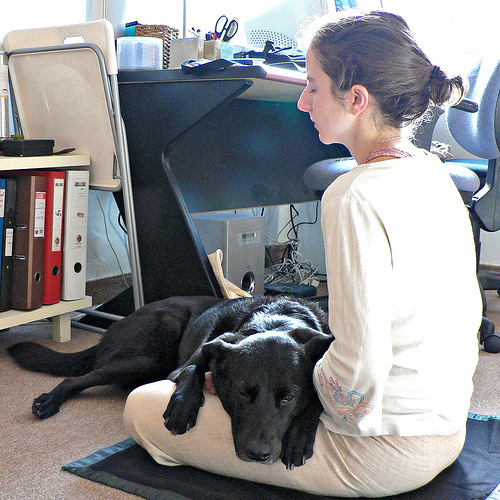In a recent e-mail to me, a correspondent talked about the problem of not having energy left after her daytime obligations:
My major problem is I have some studying to do and I am not able to do anything once I am back home. I am so tired. I’m basically brain dead too. I need the weekend to recuperate and so I am not productive at all during the weekend.
It’s a common problem: most of us seem to have days when the energy we want to have just isn’t there. Here are nine approaches that can help dredge up energy when no energy seems to be available.
1. Are you getting enough sleep? (See How Much Sleep Do You Need? 8 Hours Isn’t for Everyone) If not, are there ways you can get more, for instance by giving up a small amount of recreation time?
2. If worry is tiring you out, there are some things you can do to relieve the worry and leave more energy for getting things done. These include idea repair (see How to Detect Broken Ideas, How to Repair a Broken Idea, Step by Step, and Examples of Broken Ideas (Cognitive Distortions)), meditation (see Strengthen Willpower Through Meditation), brief walks in natural surroundings (see The Benefits of Quick, Easy, Pleasant Exercise), talking with a trusted friend or family member about worries you have, and writing in journals. Worry not only saps energy, but also makes it harder to use what energy you do have for constructive things.
3. Try to get into flow (see Flow: What It Feels Like to Be Perfectly Motivated and Some Steps for Getting into a State of Flow), a state where you’re concentrating fully on what you’re doing. Even if you feel tired at the beginning, if you really get deeply involved in a task that interests you, you can start feeling energized by the task itself.
4. Choose things to eat that will make you feel good in the short term. Of course this tends to mean whole grains, fruits and vegetables, and lean protein. Fats take a lot of digestive energy to break down and tend to make a person feel groggy, as does eating too much. Sugars tend to give a quick boost and then drop a person into a low that’s a good bit more tired than they were before the sugar high. Caffeine also tends to give a boost at one point but take much more out later. Drink enough water to ensure you’re not dehydrated: dehydration is a common cause of fatigue, as detailed in this article on the Psychology Today site. The article also contains other good anti-fatigue eating advice, like getting plenty of iron.
Of course it’s difficult to make healthy eating choices sometimes, but it can help to think about wanting to feel good right away from good food choices instead of thinking more of their long-term benefits, (though of course the long-term benefits are great, too).
5. Work yourself into an excited state about a project. Again this tends to mean talking to someone or writing about the project. This is similar to getting into flow, as it engages your mind and your interest and wakes you up.
6. Put on music that gives you a lift (see How and Why Music Changes Mood).
7. Think about things that make you happy. Reflecting on good things that happened to you over the last day, anticipating something you’re looking forward to doing soon, or thinking about someone whose company you really enjoy can make your mood more buoyant.
8. Tidy up. If your environment is messy or chaotic, you may tend to feel a little exhausted just being in it from the constant, low-level annoyance of clutter or mess. (See How Tools and Environment Make Work into Play, Part II: Letting Your Environment Help You.)
9. Meditate, or sit still for a short while. Meditation (see Strengthen Willpower Through Meditation) can help release tension and create calm and focus. If you’re not experienced in meditation, one easy way to start is with this 15-Minute Online Guided Meditation from Kelly McGonigal. Just sitting still gives you a chance to relax and let go. If you take this approach, don’t try to do anything, keep TV and music off, and just gaze out the window.
Photo by eMotionblogster karolien taverniers










 Kelly McGonigal recently
Kelly McGonigal recently 
